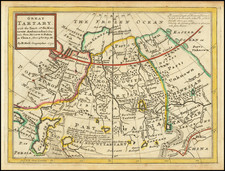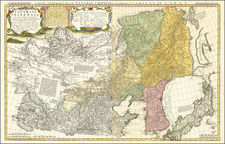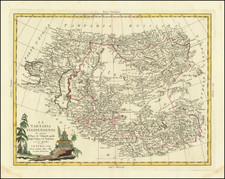One of the First Printed Maps of Taiwan
This early 18th-century map offers a significant cartographic representation of Formosa, or modern-day Taiwan, as understood by Jesuit missionaries under the commission of Emperor Kamhi. Published by Joseph Stöcklein, this work illustrates not just the geography but also the extent of European knowledge and interaction with the island at the time.
The map predominantly depicts the western portion of Taiwan, including the Punghu or Pescadores Islands and the Fokien (Fujian) coast of China. It marks several key locations, such as Keelung, Tainan, and what is likely Kaohsiung, with notable precision on the Chinese-populated western side, reflecting the areas of greater European contact and interest. In contrast, the tribal lands to the east of the Central Mountain Range remain largely unmapped, dissolving into blank spaces that articulate the limits of contemporary geographic understanding.
Interestingly, the map shows a speculative and elongated northern coastline extending beyond Keelung, a feature that underscores the exploratory nature of such early cartographic endeavors. The Jesuits, including Fathers Regis, Hinderer, and de Mailla, were tasked with surveying the Emperor's lands, and their work is preserved in this printed map, one of the earliest obtainable depictions of the island.
In comparison to the comprehensive map by Van Keulen, also from 1726, Stöcklein's rendering is understandably less detailed, lacking the substantial cartographic resources available to the VOC-affiliated Dutch cartographer. Nevertheless, Stöcklein's map remains a coveted artifact, reflective of the Jesuit missionaries' diligent documentation of their extensive travels and observations, as compiled in Stocklein's "Allerhand So Lehr-als Geist-reiche Brief, Schrifften, und Reis-Beschreibungen."
The historical significance of this map lies in its reflection of the Jesuit contribution to the global understanding of geography during the Age of Discovery, as well as the interplay between imperial ambition and missionary zeal. Stöcklein's work stands as a testament to the intricate web of communication and knowledge exchange fostered by the Jesuit order, capturing the curiosity and the scholarly rigor that characterized their approach to the wider world.














![[Shanghai, Hangzhou, Ningbo, Suzhou] Carte du Tche-kiang dressee ar les Missionaires sous la direction de Mgr Guierry de la Congregation de St. Lazare Vicaire Apostque du Tach-Kiang](https://storage.googleapis.com/raremaps/img/small/64426.jpg)